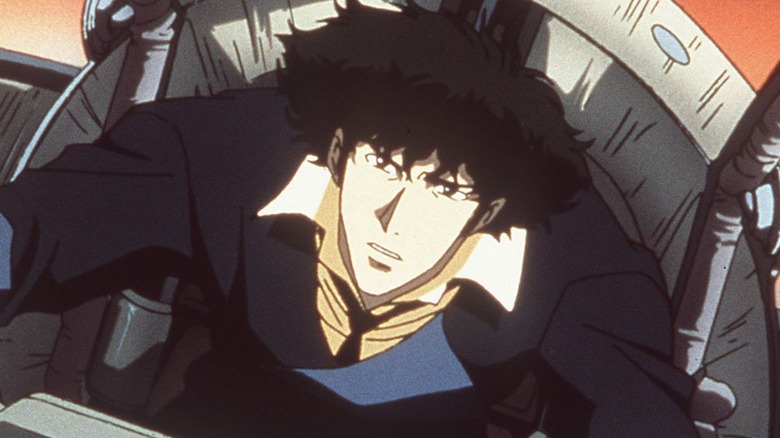
The first anime ever broadcast on Adult Swim, "Cowboy Bebop" is widely revered as the gateway anime for western viewers. Anime has always been a dynamic art form, but it was the eccentric "Cowboy Bebop" -- a perfect blend of space opera, neo-noir, western, and slapstick -- that threw open the door for anime to be highly regarded in the west, all of it propelled along by the show's critically acclaimed, bar-setting English dub.
Set in the year 2071, the show follows a rag-tag team of bounty hunters (Spike Spiegel, Jet Black, Faye Valentine, and Radical Edward) aboard a ship known as the Bebop as they hunt eccentric bounties across colonized space. "Cowboy Bebop" delivered 26 splashy episodes during its run, alongside a theatrical movie directed by then-newcomer director Shinichirō Watanabe and written by Keiko Nobumoto ("Tokyo Godfathers"). Each self-contained episode delivered a kinetic ride through space and combat, fueled by the electric jazz music of the Seatbelts, led by Yoko Kanno.
The most die-hards can wish for from the Netflix live-action remake, which credits Watanabe as a consultant, is that it pays its respects to the classic while trodding its own path, although many bemoan it can't match the anime's kinetics. But love, hate, or like the remake, Netflix has dropped all 26 episodes of the OG anime classic (in both Japanese and English dubs) before it releases its live-action take on the material. It's tough to select favorites from such a rich album of greats, but /Film has gathered its top picks here.
Asteroid Blues
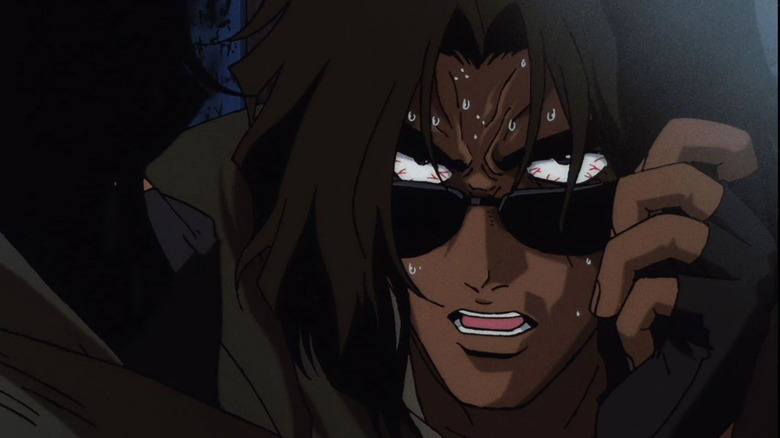
A somber music box theme is the first sound you hear in "Cowboy Bebop," just before the heatwave of its iconic, jazzy opening theme kicks in. The first scene sets the mood, with Spike posed in a rainy alley amidst a pile of cigarette butts -- a clear sign that he's been haunting this spot for quite some time. A rose falls into a puddle. Who or what is he waiting for? What does he seem to be mourning? The series answers these questions later.
After the opening theme wraps, we're introduced to the scrappy life being lived by those aboard the Bebop. Spike and Jet are two bounty hunters looking to fill their perpetually empty bellies (Spike, specifically, is just pining for a protein-based meal). Their chance comes when Spike goes after the drug dealer Asimov, who sinks deeper and deeper into a murderous, bestial rage the more he samples his own supply. The bounty is also accompanied by his loyal girlfriend, who makes an impression on Spike with her desire to find happiness on Mars. The more she gets into trouble, the more she realizes that happiness will not be in her grasp.
"Asteroid Blues" establishes the usual rhythm of the series: Underdog bounty hunters seek a criminal or overcome an adversary of the week, but often become side players in someone else's story, and go home penniless.
Sympathy For The Devil
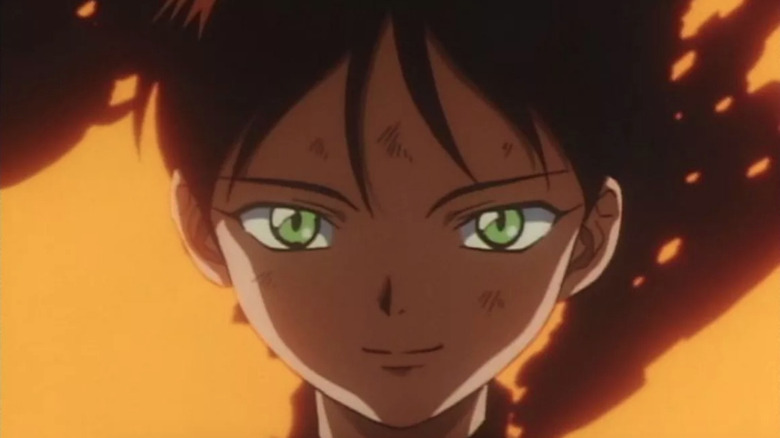
This story first hurls viewers into a nightmare -- quick, uneasy shots of glassy eyes and sinister chemicals -- before we see Spike laying on an operating table. He then wakes up in a jazz club, intoxicated by the sound of a child playing harmonica somewhere nearby. Such ghastly imagery indicates a certain disintegrated innocence, one which will be thoughtfully explored before this episode is over.
It turns out that the kid playing harmonica, Wen, is an old man trapped in a child's body. After a cataclysmic impact on Earth scattered humanity to the stars, Wen was cursed to be ageless and subjected to experimentation. He's anything but a paragon of childlike innocence, kidnapping and drugging henchmen to evade capture ... until Spike acquires a vial that just might allow the "kid" to age and die in peace.
Atmospheric and haunted by the mournful sounds of the harmonica, "Sympathy for the Devil" earns its title due to the pity it so clearly feels for its titular "Devil" (The flashback where Wen's innocence is obliterated in flashes of light is sure to haunt). When he ultimately puts the young immortal to rest, Spike's final gesture foreshadows both his fate and his acceptance that there are forces and individual stories beyond his understanding. By witnessing this child's mortality, Spike is reminded of his own. "Sympathy for the Devil" encompasses one pessimistic sentiment: What's the point of living forever if longevity only prolongs your suffering?
Pierrot Le Fou
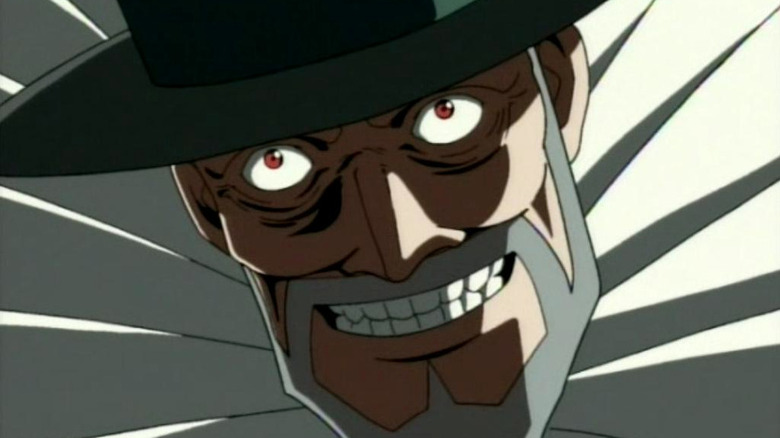
"Pierrot le Fou" boasts one of the show's grandest setpieces and a top-tier tragic villain -- one with parallels to Wen's story. While hunting a bounty, Spike has a run-in with the clown-attired Pierrot, an insane, manically-laughing assassin with a reputation creepier than any urban legend. Spike is warned that this quarry puts him in real danger.
Their final encounter is staged among a memorable promenade of titanic carnival bots and hyperactive swirling attractions, the whole sequence drenched in saturated and flashy carnival lights. Stuffed animals stare with demon eyes and pointy teeth from game booths. Spike winds up in a strange funhouse where holo-creatures pester him with warnings.
Despite the flurry of garish horror elements, most heartbreaking are the flashbacks to Pierrot's trauma as an experimental guinea pig during the Titan War. The still shots of syringes plucking into cells, glass vials, and white walls (along with the bloody corpses of scientists) place viewers inside a fried brain caught in an advanced state of regression. Like Spike, you can't help but watch in pity as Pierrot sobs and lays down to accept his annihilation. In Jet's words, "There's nothing as cruel and pure as a child." What's noteworthy is that Spike never learns the full extent of Pierrot's background -- by the time that Jet delivers this information, almost like a delayed punchline, Spike doesn't need it -- but he can recognize the tragedy from a distance.
Ganymede Elegy
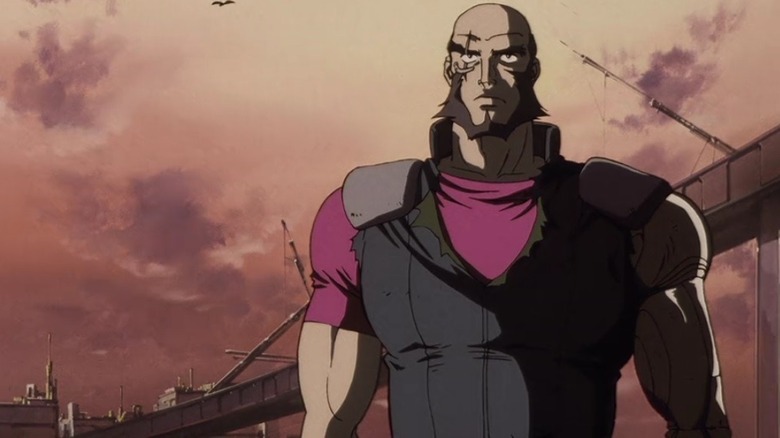
An exploration of Jet's past, "Ganymede Elegy" concerns Jet's relationship with his ex-girlfriend Alisa ... and her current boyfriend, who just happens to be the bounty on this mission. But, really, the bounty here is beside the point: Jet wants answers as to why Alisa ditched him. After a chase, Alisa spills what made her leave -- his complete control over their relationship and decision-making, giving her no voice.
Jet and Alisa's dynamic mirrors Spike's past romance with rhyming heartaches, despite the differences in story and dynamics. Jet ruminates on his old denial over Alisa's departure, as if their love was nothing more than a dream. Alisa's reasons for leaving are a reckoning for Jet as well, a reminder that his loved ones are their own individuals operating with their own free will. Alisa and Jet have a considerably happier outcome than Spike's relationship: Jet gets to move on, while Spike later accepts that he cannot escape the past.
"Cowboy Bebop" deals well with both silence and soundscape, such as the ticking of the clock in the bar where Alisa and Jet reunite. When Alisa reminds him that "time never stands still," she's telling him that life will roll on. The track "Elm," with its nostalgic but gloomy "la la la" and guitar-strumming, digs into the severed pair's emotional wounds.
Jamming With Edward
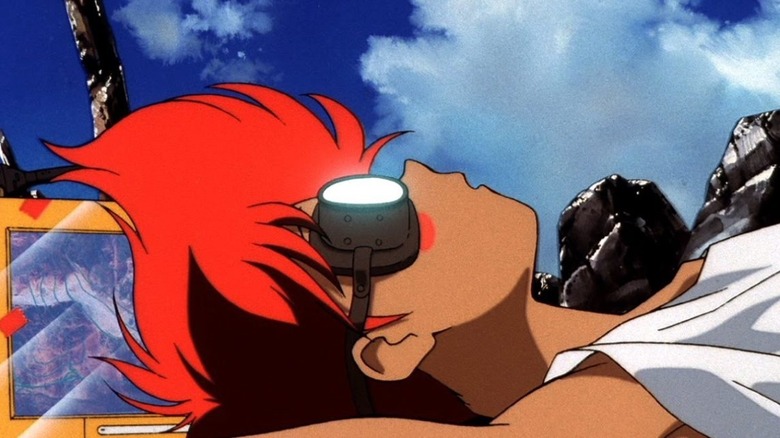
This chapter introduces the genius young hacker Radical Edward, who eventually makes herself (along with her loopy outlook, playful acrobats, and god-tier hacking) at home on the Bebop as a comic relief character.
In hopes of cashing in on a bounty, Spike and Jet are after a mysterious, somewhat prankish hacker who's been carving large-scale images onto the Earth's wasteland surface. What the pair don't know is that the culprit isn't a human at all, but an AWOL satellite A.I., inspired by Hal-9000 of "2001: A Space Odyssey." As it turns out, the sentient A.I. isn't malicious -- it's just a soul that longs for company. Radical Ed is privy to the computer's lonely thoughts, so she kindly devises a way for the program to live amongst them without getting sold as a bounty. The computer's melancholy injects a bit of sorrow into an otherwise lighthearted plot.
Like Ein, Ed is a mascot for the comedic side of "Cowboy Bebop." Ed proves herself a valuable asset as the series goes on, even if she acts like a pesky sibling.
Brain Scratch
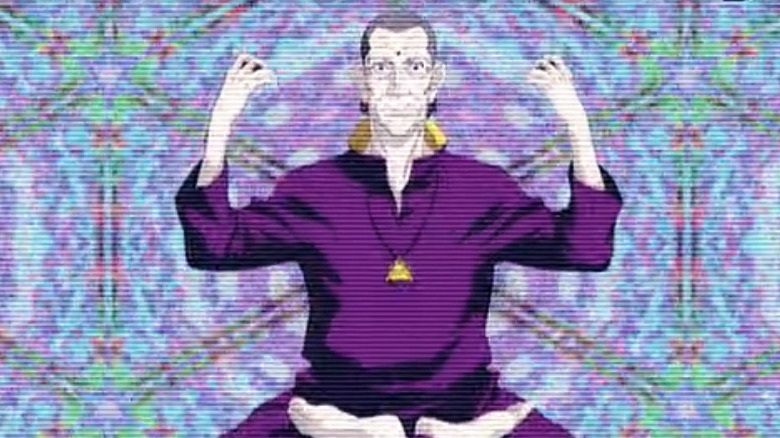
A kaleidoscope of trippy visuals and technological anxiety, "Brain Scratch" opens on a succession of TV channels being flipped, with the signal repeatedly landing on a broadcast from a cyber-cult. Fronted by the elusive Dr. Londes, this cult believes that uploading your consciousness to the internet will lead directly to salvation.
Spike and Jet discover that Faye has infiltrated the cyber-cult in order to nab a big bounty, the elusive cult leader, so they follow some clues to snag him ... only to uncover an outlandish twist about Dr. Londes' origins. The good doctor preaches that information overload from television can engulf humans into fantasies "controlled by tiny dots of light." Brain waves assume weird, unwieldy shapes, which Jet discovers upon learning of the cult leader's origins. "Brain Scratch" plays to the paranoia that technology may obtain absolute control over our brains while persuading its audience to get comfortable in its roiling electronic sea, creating an observable dissonance between serenity and horror.
Toys In The Attic
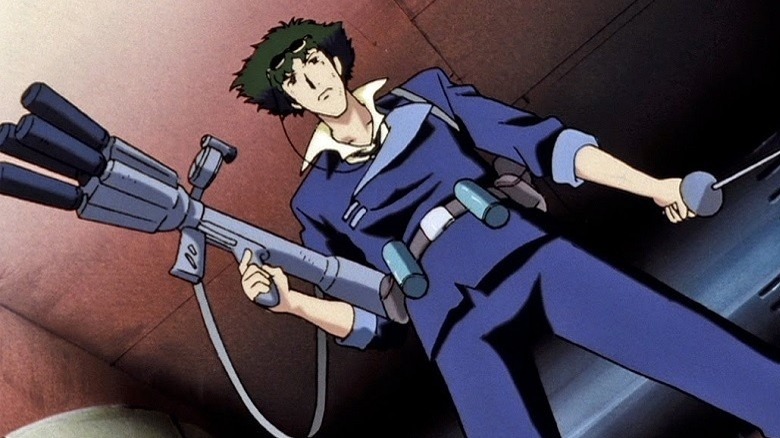
Like "Cowboy Funk," this episode is on the goofy side of "Cowboy Bebop" episodes, even if its disconcerting, stomach-churning atmosphere makes that hard to see from the get-go. A riff on "Alien," the tale revolves around a mysterious bio-disease spreading through the Bebop, leaving purple splotches on its occupants' skin and dragging the infected into a dangerous slumber. The crew investigates, but are claimed one by one.
"Toys in the Attic" also functions as a means for dispensing members' respective philosophies and interiority through voiceovers. Jet and Faye share their separate life philosophies to the audience: Jet ruminates on the danger of forgetting valuable lessons, while Faye espouses a "survival of the fittest" perspective. Ed and Spike's thoughts, meanwhile, land a bit more on the humorous side, with the former's weird brain chittering "Follow strangers" and latter's interior monologue boiling down to "Don't leave things in the fridge."
The twist regarding the disease's origins, delivered through Spike's voiceover, is a rib-cracking reveal. The ending is trollishly hilarious, resetting everything to the status quo; the horrific events of the episode never to be mentioned again (Even if you're not a fan of the live-action remake, you might perversely wonder how it will attempt to tackle adapting this one). Lots of "Cowboy Bebop" episodes may be comfortable with conclusions that make a grand statement about its characters, themes, or world, but like "Cowboy Funk," this one almost feels like it's making fun of modern television's belief that a misadventure has to have a larger meaning.
Jupiter Jazz
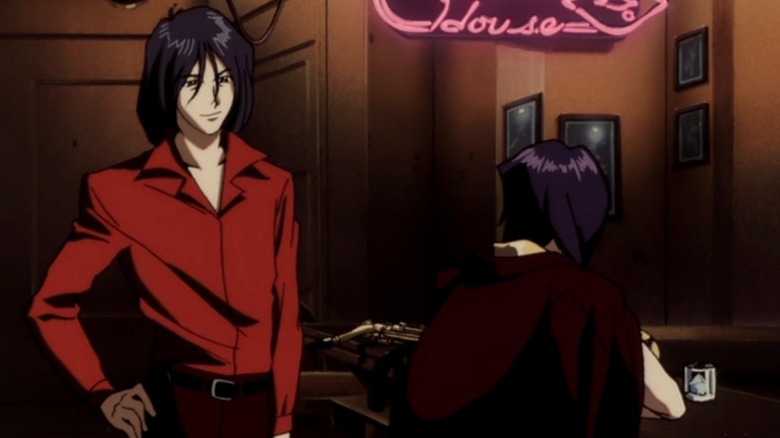
Solitude has never cut so deep. As Spike investigates the mention of the name "Julia" on a database, Faye makes off with the Bebop's meager savings to the frigid planet of Callisto, a place alleged to be devoid of women. There she runs into an enigma -- the charming sax-player Gren, who turns out to harbor a vendetta against Vicious.
"Jupiter Jazz" is like sadness submerged in a bottomless bottle of blues, sprinkled with grey snow and solemn jazz music. The story also reminds us that, while the Bebop crew are a quintessential space family, they still keep each other at arm's length where their business and motives are concerned; they'll act on their own accord, against the others' own interests. This leads to Faye confiding in Gren the bittersweetness of being in and around the Bebop crew, but still feeling lonely in a group.
Hard Luck Woman
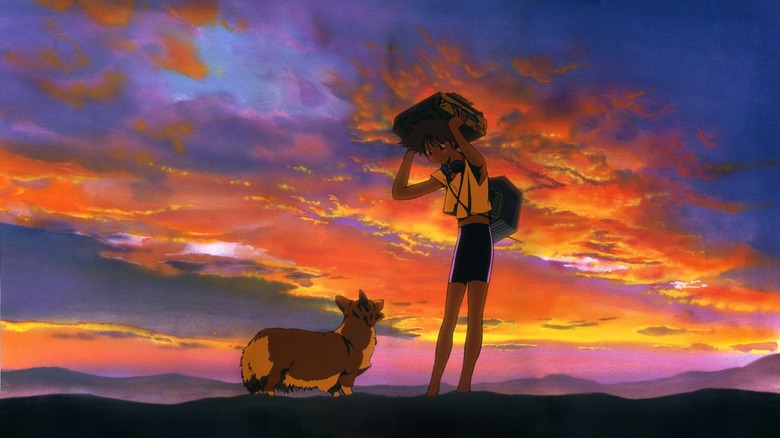
The penultimate episode of "Cowboy Bebop" brings a number of plotlines to a bittersweet conclusion. Jet and Spike get into a scuffle with a bounty who turns out to be Ed's long-lost and neglectful father. Faye digs up her past and discovers the empty landscape where a house once stood. We also witness the emotional departure of the show's comic relief duo, Ed and Ein, a harbinger of the melancholy that will follow in the series finale (It's worth noting that there is a bit of relief offered here, with Jet and Spike finally stuffing their mouths with protein-heavy foods).
Faye taking off is one of the show's longest-running gags, a routine Spike and Jet watched play out repeatedly over its 20-plus episode run. But the saddest epiphany may be that the normally isolated Faye wants to belong, after all. For some, there are hopeful endings. For others, not so much. What Faye learns later, however, is that sometimes it's worth it to carry the weight of the past.
Cowboy Funk
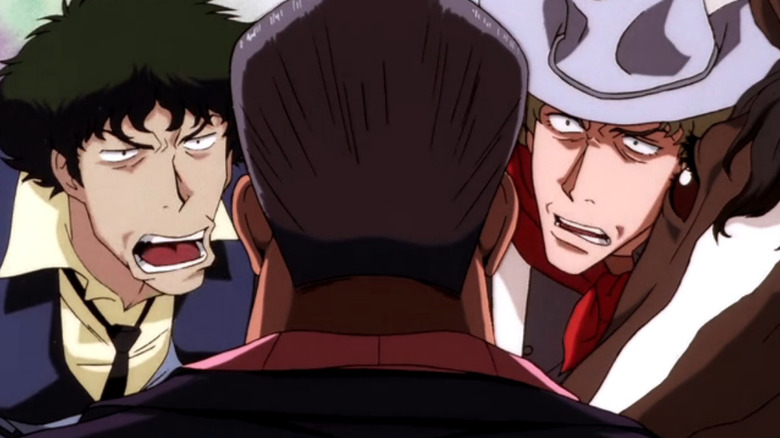
Silly even by the standards of "Cowboy Bebop," this all-timer episode finds Spike meeting his most annoying foil: a dim-witted wannabe bounty hunter named Andy. Said cowboy comes trotting in on his chestnut stallion and constantly ruins Spike and Jet's chances to capture the Teddy Bomber, notorious for destroying buildings with bomb-implanted teddy bears. Humorously, Andy is so terrible at recognizing faces that he keeps mistaking Spike and Jet for his real bounty. What's his deal? Faye discovers that he's just a bored rich dude with time to kill.
Spike and Andy eventually square off in a showdown of fists and guns, during which Andy has a career epiphany that's so flippant compared to his previous motives that it's hard not to find it hilarious. Amusingly, their petty disputes and fisticuffs are the main focus of the climax, pushing the rants of their bomb-obsessed antagonist to the side and leaving the Teddy Bomber utterly baffled that the story has reduced his presence and anti-capitalist motives to an afterthought.
Ballad Of Fallen Angels
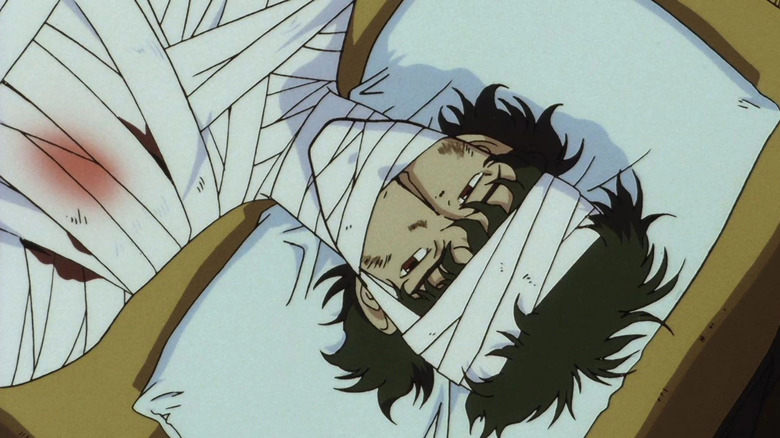
In "Battle of Fallen Angels," Faye finds herself lured into a job by a hefty bounty, only to be apprehended by the Syndicate. Her capture draws Spike into a confrontation in a cathedral — to the soulful, pipe organ-infused tune of "Rain" — where he finds himself face-to-face with a man from his past: the white-haired Syndicate leader, Vicious.
Anyone attempting to describe "Cowboy Bebop" to an uninitiated viewer might show them the highly symbolic sequence wherein Spike falls in slow-motion from the top of the cathedral. His glassy eye observes the floating stained glass shards, while his mind unleashes a raging torrent of flashbacks to his besotted past, all set to the hymn of "Green Bird." In the process, he glimpses the mysterious lady of his dreams, his bygone bond with Vicious, and the violent Syndicate life he has settled into.
"Ballad of Fallen Angels" continues the long-running arc about Spike's soul, always too mired in its own history to see a future. Staged around tinted stained glass, both the fight and Vicious' words show that Spike is stuck between two worlds, with his spirit suspended in a liminal state. The audience, in turn, cannot help but find itself wrapped in the haze of Spike's soul.
The Real Folk Blues
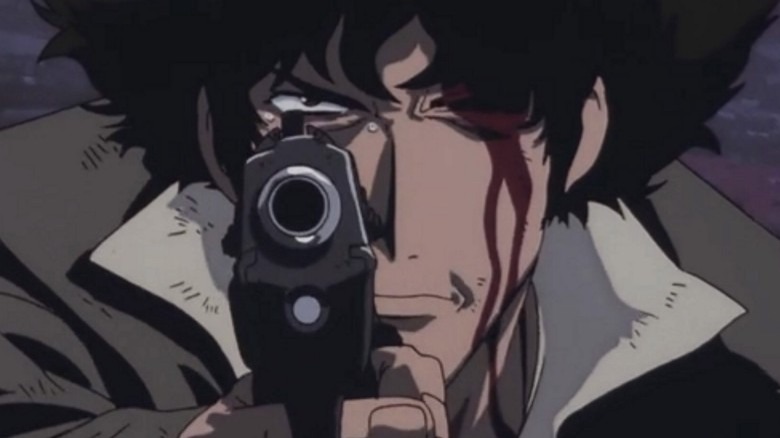
"The Real Folk Blues" storms out of the gates and dares to end on a literal bang. Dreams do not come true in this harsh galaxy.
Spike finally reunites with the love of his life, Julia, but their dreams of fleeing and starting a new life together are snatched away by the ruthless Syndicate. Spike decides to find out once and for all whether he's "really alive," and leaves his found family behind in order to wreak havoc on the Syndicate. He also joins Jet (who respects Spike's reasons for departing) for some final moments of banter, a few laughs, and a good meal. Despite the clear finality of Spike's choice, life quietly marches on for the rest of the Bebop crew. Jet polishes the Bebop with a knowing expression, while Faye finds herself frozen with grief over Spike's departure, caring more about her new family than she lets on.
The finale of "Cowboy Bebop" packs an emotional wallop for viewers, following Spike as he marches into the Syndicate, decimates Vicious' gang, and defeats Vicious once and for all ... but not without being mortally wounded. Many questions have been raised as to whether Spike is unconscious or dead, but the answer isn't as important as the image we are left with: Spike as a soul, caught in a dream state of perpetual longing, set to the thunderous sounds of Mai Yamane's "Blue" and the screamed lyric "I'm so free."
Read this next: The 14 Greatest Science Fiction Movies Of The 21st Century
The post The 12 Best Cowboy Bebop Episodes appeared first on /Film.
0 Commentaires